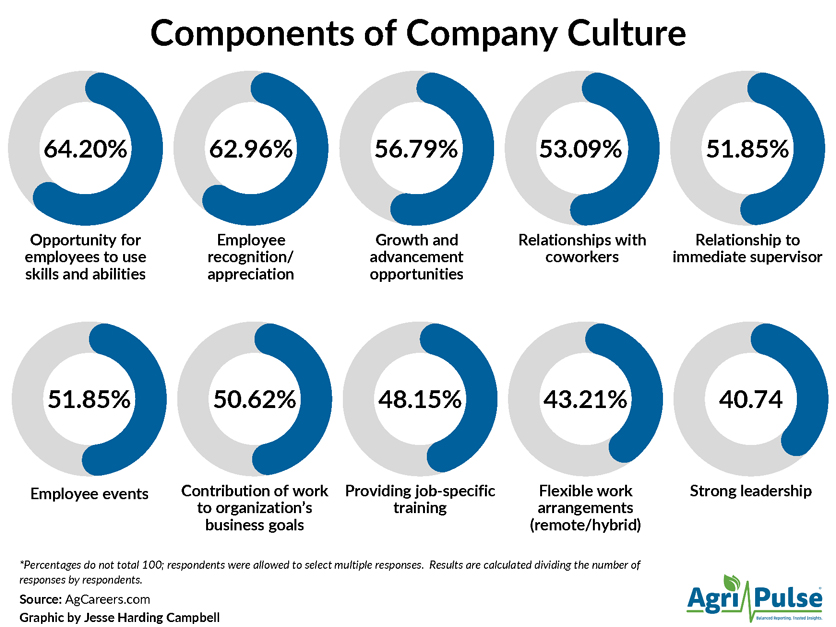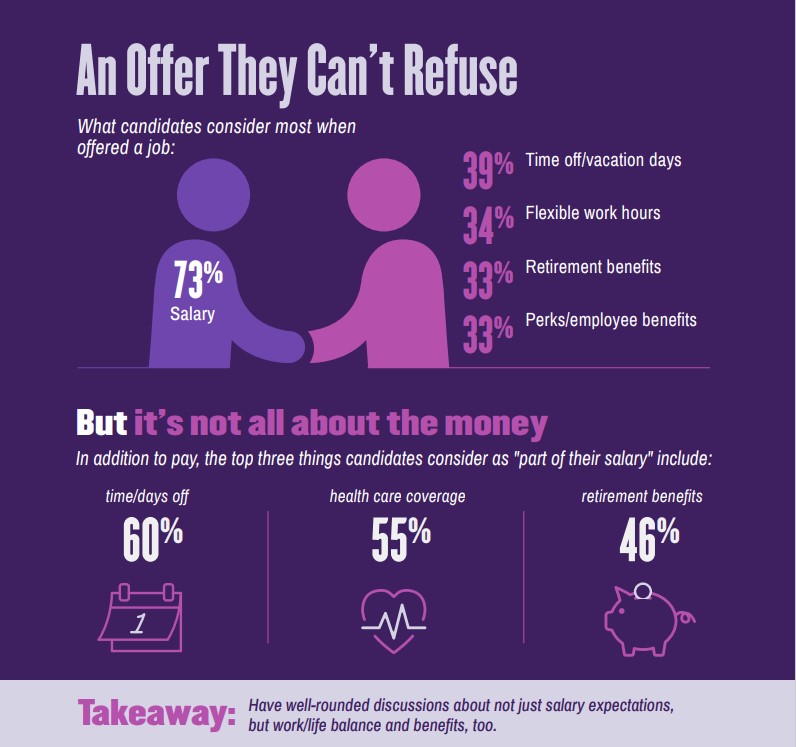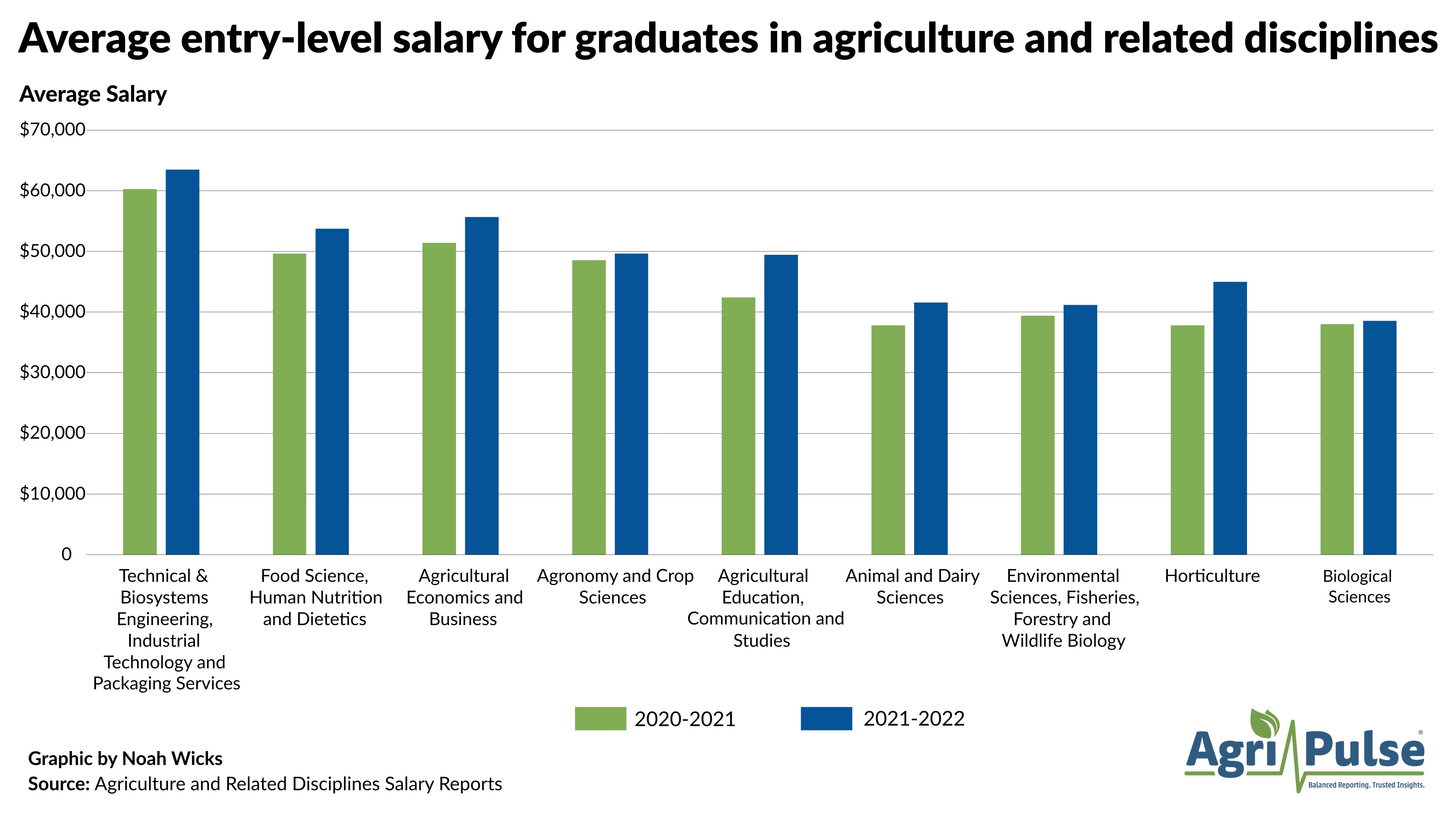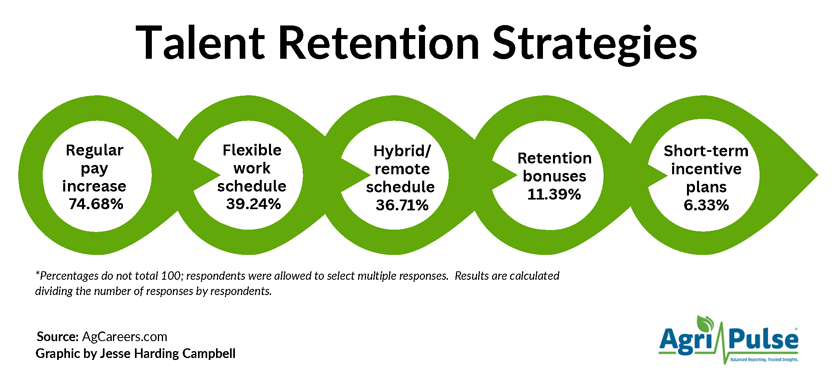This is the second installment in our five-part series on “The Great Farm and Food Talent Search,” a look at the workforce issues facing American agriculture. Part one of the series focused on the search for the next generation of agricultural employees.
A few years ago, Trenten Wills wasn’t even thinking about a career in agriculture.
The native of Kankakee, Illinois, headed to the University of Arkansas at Pine Bluff seeking a degree in business administration. But his advisers convinced him that he should switch to agricultural business because there were more job opportunities, and he was offered a scholarship that enabled him to pay for his entire degree.
“I’m a huge advocate of students now going into the agricultural world where there's so many possibilities and you can be who you want to be, earn the income you want to earn and be part of a constantly changing industry,” he told Agri-Pulse.
But as he prepares to graduate in May 2024, Wills will be looking for an employer that offers not only good wages but a good fit for his personal goals.
“Flexibility and the ability to travel are my two main priorities,” he said. However, he also is looking for smaller companies with a family environment and a high priority on innovation.
 Trenten Wills, University of Arkansas at Pine Bluff
Trenten Wills, University of Arkansas at Pine Bluff
More and more prospective employees tell recruiters they are looking for companies and organizations that offer much more than good pay and benefits. Like Wills, it’s often the culture of a company that matters most.
“People think the grass is always greener on the other side, but we see that there’s the adage of the ‘grass is greener where you water it,’” said Jessi Sletten, talent acquisition senior director for CHS Inc., a farmer-owned cooperative and diversified agribusiness based in the Minneapolis-St. Paul area.
Agriculture companies are becoming creative in getting new employees in the door, and then keeping them there by establishing a culture that values the input of employees and helps them buy into the overall mission of feeding and fueling the world.
“You can’t fake a good culture,” Sletten said.
“We want to think about the interaction employees have with their leader. Is that a culture where everyone’s working hard, where we’re being good teammates and we’re investing in our local communities? Is it a safe workplace?” Sletten said. “At the end of the day, if all things are equal with pay and benefits and maybe schedule, it is who you work with, how they treat you, and does your work matter.”

As detailed in an AgCareers.com HR Review scheduled for release this fall, employers in the agriculture and food space — as in many other industries — are finding themselves hyper-focused on the need to secure the best talent.
Employees are increasingly drawn to companies that show they are flexible, transparent and care, said Rachael Powell, HR and compensation solutions manager at AgCareers.com. “Employers are now tested by what they do, not just what they say,” she said.
AgCareers.com asked employers how they are competing for talent, with the top responses being creating a positive work culture (75%) and offering better benefits (64%). Increasing compensation lagged at 51%.
Creating a positive culture
Companies that are investing in career development and addressing their employees’ well-being are finding success in attracting and retaining workers, according to many of the ag industry’s hiring managers.
Future employees want to feel there’s a good culture fit, said Powell. That means employers need to be authentic with potential employees about where a company has been successful and where it's trying to improve, while offering candidates clear ways they can contribute to reaching the company's overall goals, she said.
Don't miss a beat sign up for a FREE month of Agri-Pulse news! The latest on what’s happening in Washington, D.C. and around the country in agriculture, just click here.
Positive relationships with co-workers, strong leadership and flexible work arrangements are important, too.
Debbie Tucker, head of people and organizational development at Syngenta’s North America Crop Protection, said the company’s philosophy of “how we do things matters” drives many of its benefits and career opportunities. Syngenta has been recognized as one of the world’s top five leading employers — and the top agriculture employer — in the 2022 Science Careers Top Employers Survey; the company has appeared on the list 12 times in 13 years.
Syngenta’s retention effort starts with offering on-the-job career development activities, but also involves encouraging participation in various employee resource groups based on ethnicity, gender, mental health and leadership. The company also offers classroom training with 24/7 e-learning opportunities, coaching programs and networking opportunities.
Tucker said this new generation of workers isn't just interested in one career path. They learn quickly and seek out additional learning opportunities. “They don’t want to stay in one area, but often want to experiment and explore in different ones,” she said.
Julie Davis, senior director of workforce and industry initiatives at the Association of Equipment Manufacturers, said Bureau of Labor Statistics data show employees 35 years old and younger stay with one employer for an average of just 2.8 years. The average for all workers is four years.
“What I tell companies is the first year an employee works for you they’re learning their job. The second year they’re learning your company. The third year they’re asking, ‘What are you going to do for me?’ And if companies don’t have an answer for career development or professional development, that employee is going to find that next step somewhere else.”
Many companies are investing in developing future leaders and training them in different areas beyond their entry-level assignments. Corteva operates a program called DELTA, which stands for Developing Emerging Leaders and Talent in Agriculture, said Angela Latcham, the company's seed production and supply chain leader. As new employees enter into agronomy and production fields, DELTA helps them develop business acumen and exposes them to other career opportunities at Corteva.
Future employees have an eye on company values
 Roxi Beck, Center for Food Integrity
Roxi Beck, Center for Food Integrity
Companies must also communicate the right values to their employees.
Roxi Beck, director of consumer engagement at the Center for Food Integrity, said in a webinar although some companies are creating sustainability plans to appeal to consumers or investors, others see sustainability plans as important to recruiting new employees as well.
Beck said it's important for companies to clearly communicate which social issues and causes are most important to the company as it relates to sustainability. Job candidates also want to know what role they can play in achieving corporate goals, which should be easily identifiable on a company’s social media or website, she said.
Matt Dean, chief financial officer for Versova, one of the top egg-producing companies in the United States, said retaining existing workers requires communicating the goals and mission of the company, including how the company is involved in local communities.
“People want to feel good about where they work,” Dean said. He hopes that team members feel proud to produce “nature’s perfect food” — nutritious, affordable eggs.
Dean said Versova has shifted some of its internal communications to highlight the importance of eggs to consumers; the company’s eggs touch as many as 40 million plates every day. The company also highlights its community involvement in working with food banks or holding pancake breakfasts for local fire departments.
Diversity in the workplace is important to candidates, too. Beck cited a Monster.com survey of Gen Z candidates in which 83% said a company’s commitment to diversity and inclusion was important in choosing an employer.
 Graphic: Monster
Graphic: Monster
Syngenta's Tucker said a company’s commitment to diversity, equity and inclusion is a differentiator in attracting and retaining the current workforce at the company. Syngenta has invested heavily in diverse partnerships by recruiting future employees with partnerships at the National Society for Minorities in Agriculture, Natural Resources and Related Sciences (MANRRS), Women in Agribusiness, the National FFA Organization and Agriculture Future of America.
“We have a dedicated diversity and inclusion leader, which to me speaks volumes about how this is our commitment and we're investing there,” Tucker said.
Communication boosts understanding of goals
Leader development and empowerment both help build a positive culture throughout an organization.
“If you're dictating what you think your employees want, I will guarantee that you're probably missing the mark. And so, the first piece of building a culture that retains employees is all about starting to engage in conversation with them, get their input and really react to the messages that they are giving you,” Davis said.
Employees who feel they’re being heard are more loyal to that company, with 66% saying they’d stay beyond five years, according to a Deloitte Global 2022 Gen Z Survey.
AgCareers.com also found that employee recognition programs are important; 40% of companies stated it helped keep staff motivated and challenged.
The nation’s third-largest poultry producer, Wayne-Sanderson Farms, created an employee recognition program called “Amazing Starts with Me.” The initiative aims to encourage Wayne-Sanderson Farms' employees at all levels of the company to go above and beyond in four key pillar areas: people, planet, food quality and animal welfare.
Employees at Wayne-Sanderson can nominate a colleague to recognize their accomplishments. Their “Amazing Starts with Me” program features employee spotlights, infographics, facility signage, video development, newsletters and event planning to celebrate their team members.
Empowering leaders to be part of the success
As Versova, the egg producer, builds on its communication strategy, it's taken a new, proactive approach to locally based management that company officials believe has helped retain workers.
“The best recruiting tool we have is to limit the people who walk in and then walk back out,” Dean said. “We’ve tried to focus as much as we can on retention, and not just recruitment. Because you can’t just churn and churn and churn. You need to find stabilization.”
Dean recognizes the labor availability problem isn’t going away anytime soon. Maintaining stability in their 1,350 jobs at farms located in Ohio, Iowa, Washington and Oregon remains a challenge.
Under Versova’s new business unit management structure, there are individual managers over each site, which may include both farms and processing facilities. The site managers get bonuses based on the overall productivity of the site, as well as bonuses based on employee retention and employee input.
“We felt that when you give people the empowerment that they own the business, that they own the financials, they care that much more,” Dean said.
But competitive pay matters, too
Despite leadership's best attempts to establish a culture that retains workers, Versova's exit surveys find pay is still a leading reason why employees leave for other jobs.
“Not every market is the same. We can’t do the same pay changes in Ohio that we would do in Iowa or in Washington or Oregon,” he said. “We’ve increased our rates where we need to in order to be competitive, but also to make sure our employees feel valued.”
Versova’s Trillium Farms in central Ohio will soon have a local job competitor with the arrival of a new Intel microchip manufacturing plant. Proximity to large urban areas can be a blessing and a curse, Dean said.
“In places such as Columbus, you have access to amazing, talented people who could join your team, but it’s competitive,” Dean said. “We view the competition as a challenge.”
The AgCareers.com survey of ag companies found that to attract new talent, nearly half (46%) are offering higher starting pay for new employees, compared to 55.7% in the 2022 survey. Forty percent offer remote and hybrid work options, and just over a third (36%) offer a sign-on bonus. An estimated 27% offer additional paid time off or paid leave.
Entry-level salaries are also on the rise for college graduates, according to information compiled from 19 agricultural colleges and universities across the country. Iowa State University Director of Career Services Mike Gaul said although not surprising given economic conditions, nine ag job sectors showed positive salary gains in 2022 versus 2021.
“What is surprising, though, is the magnitude of these gains, averaging 8.4% across all sectors with a range of 1.4% in biological sciences to 19.1% in horticulture,” Gaul said.

The top five earning sectors included technology ($63,474 — up 5.3%), ag economics & business ($55,641 — up 8.2%), food science ($53,728 — up 8.3%), agronomy ($49,637 — up 2.3%) and ag education ($49,433 — up 16.5%), the report noted.
Ag companies have increasingly been conducting compensation studies, AgCareers.com reported. In 2023, over one-third of companies said they had conducted a study within the last six months, and another quarter said they conducted a pay study within the last year.
“Employees who feel their company is proactively working to solve compensation issues will feel that their employer has their best interest,” the HR Review notes.
Flexible work schedules becoming necessary
The COVID-19 pandemic opened the door for hybrid and telework opportunities, and that has set the stage for major changes in how companies structure their workdays as well as how they adjust to their employees.
Flexibility looks different to each employee, and companies must determine what is feasible and workable.
AEM’s Davis said COVID reawakened employers to the truth that “employees are human beings, and you’re going to need to talk with them to find out what they want.” She suggested surveying employees about what they want in terms of job flexibility.
For instance, an employee's workday could be improved if it aligns with school start and stop times. There also is the option of transitioning to a four-day workweek. “There’s no right answer. That right answer is driven by your employees and the age groups of your employees and what’s important to them,” Davis said.
AgCareers.com reported that 54% of employees now offer a hybrid work environment. Fewer than one-third of employers do not offer flexible work arrangements.

Several employers said the pandemic showed how flexibility can still provide the framework for efficient and productive employees. Now, companies have a larger pool of applicants for future job openings, although many agriculture and ag manufacturing jobs require on-site work.
“For our industry to embrace this new dynamic where it works and where it fits, has been positive and helped,” said DeeAnne Marlow, vice president of human resources for Hilmar Cheese Co. Because milk arrives at plants around the clock, the company has transitioned to some 12-hour shifts and rotated scheduling to give people more time off and for longer stretches of time, she said.
Sletten of CHS said her entire team of recruiters used to have to be located at the Twin Cities headquarters, even though they supported the hiring of employees nationwide. That policy changed as a result of the pandemic. “The value of hiring talent that lives and works in the community far outweighs my need to have a recruiter based in Minnesota.”
Employers increasingly prioritize mental health
As COVID opened the door to hybrid work, it also brought a new realization of the importance of employees' well-being.
“During COVID, it was a really big focus on your physical well-being as we worked on offering adequate testing and precautionary measures. But then what evolved is this sense of mental health and recognition of isolation because you weren’t at your workplace or other things your work community gives you,” Sletten said.
CHS has started coaching managers to be mindful of their team’s well-being. “Sitting in meetings all day, every day is not good for anyone, it’s not productive and it’s a drain on your energy,” she added.
CFI's Beck said Gen Z employees are the first demographic who say mental health is a priority when looking for jobs. Managers can help build empathy skills and teach the importance of recognizing red flags and reducing employee stress and anxiety levels, she said.
Health and wellness centers becoming more common
Employees also expect adequate health insurance, and some companies are even offering health care on-site.
For more than 14 years, Syngenta has had an on-site physician and nursing staff for its employees as well as a mobile health care center to send to satellite sites that do health screenings for employees and their family members. Tucker said this is a way to stay ahead of health issues, especially for those employees located in more rural areas who may have less access to health care services.
 Syngenta mobile health unit
Syngenta mobile health unit
Syngenta, like other companies, also offers incentives to encourage healthy living.
Clemens Food Group, an East Coast pork producer and processor, has a Family Wellness Center with a full-court gym and cardio and strength training classes. The company offers a gym membership for $12 a month, and employees can even get the fee reimbursed if they work out in the gym at least 10 times during the month.
On-site health services at Clemens’ Family Wellness Center feature family doctors and nurses for routine checkups, physical exams and chronic condition management, as well as occupational and physical therapy. Having those options on-site means employees don’t have to take time off to get care, said Keith Stahler, who oversees hiring for Clemens Food Group.
Another perk being offered to employees is paid paternity and maternity leave. Julia Campbell, a recent graduate of Iowa State who just accepted a full-time position with Corteva, said the 16 weeks of maternity leave was attractive to her as she looks forward to a career and family.
“To me, that’s really hard to beat in our industry. I know that these companies are wanting to remain competitive, but to me, that focus on being home as a family for that time is really important,” Campbell said.
She added that other larger players in the ag industry are recruiting students and trying to create competitive benefits packages. “It’s kind of a call to action because work-life balance for my generation and my peers is becoming even more relevant, especially after what many are calling the ‘Great Reset’ after the pandemic,” Campbell said.
Evolving necessary to meet changing needs
Company leaders say it's also critical for firms to continue to evolve to meet future workforce needs.
Clemens Food Group, for example, has employed creative new approaches to attracting workers, and that has helped the company weather the tight labor market.
Clemens’ two pork processing facilities draw from different labor pools that require different approaches to filling jobs. The company’s Hatfield, Pennsylvania, facility is situated 20 miles north of Philadelphia. Advertising openings on billboards and social media ads and allowing walk-in interviews all helped bring in new applicants.
Clemens' Coldwater, Michigan, facility is in a remote rural area of just under 14,000 people. The company successfully relocated more than 700 team members to the area from places such as Florida, Texas and California. Some of the workers had been with amusement parks and other businesses affected by the COVID-related disruptions.
 Keith Stahler, Clemens Food Group
Keith Stahler, Clemens Food Group
“We’ve definitely had a lot of luck with drumming up interest and generating leads for candidates,” said Stahler.
Having competitive wages and benefits, paired with a family atmosphere and culture, resonated with candidates. But Stahler said the company also invested significantly in relocation assistance, including housing for 90 days, and hiring relocation specialists to help new employees get acclimated to the town.
“It was difficult, and still is in some cases, to entice somebody to move from a place like Florida or a more populated area to a place like Coldwater, Michigan.
“But as we continue to grow, we learned that there are people out there who want to settle down and want to get away from more of the hustle and bustle and be part of a more tight-knit community. As we started to bring more of those people in, we started to get more and more referrals,” Stahler said.
Agricultural companies, both in more rural or corporate-urban settings, recognize the challenges of the labor force today and acknowledge that they must continue to pivot and respond to a changing workforce.
“We’re still able to find really good talent for what we do, but we have to prepare for a competitive environment, and of course the labor environment right now is incredibly competitive,” said Mark Lowery, director of commercial marketing for New Holland Agriculture North America.
“It's taking the lessons learned now in the current labor environment and not resting. This issue of the exposure of understanding of agriculture, recruiting folks and growing digital competencies is not going to relax. So, we just have to be vigilant.”
For more news, go to Agri-Pulse.com.


